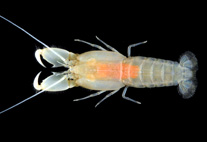Abstract
Euwallacea Hopkins and Wallacellus Hulcr & Cognato are ambrosia beetle genera within the tribe Xyleborini (Coleoptera: Curculionidae: Scolytinae). Several species have recently received attention due to their establishment in non-native regions with serious ecological and economic consequences. To clarify generic placement of these species, we tested reciprocal monophyly of the two genera and the placement of several species using molecular phylogenetics. We sequenced, or re-used published sequences of, three markers (COI mtDNA, 28S nuclear rDNA and ArgK single-copy nuclear) from representatives of Euwallacea, Wallacellus, the Ambrosiodmus clade, and the clade containing Xyleborus s. str., and inferred their relationships with a Bayesian approach. We also tested explicit alternative topologies, and examined taxonomic utility of characters used for the delimitation of the genera.
All species of Euwallacea, Wallacellus, and two species of Xyleborus were monophyletic with high phylogenetic support. Based on the analysis and shared morphological characters, we transferred the following species to Euwallacea: Xyleborus declivispinatus (Schedl), Wallacellus piceus (Motschulsky), Xyleborus posticus (Eichhoff), Wallacellus similis (Ferrari), and Wallacellus striatulus (Browne). The genus Wallacellus was made a junior synonym of Euwallacea and morphological diagnosis of Euwallacea was updated. The results demonstrated that Euwallacea has a pantropical distribution.

